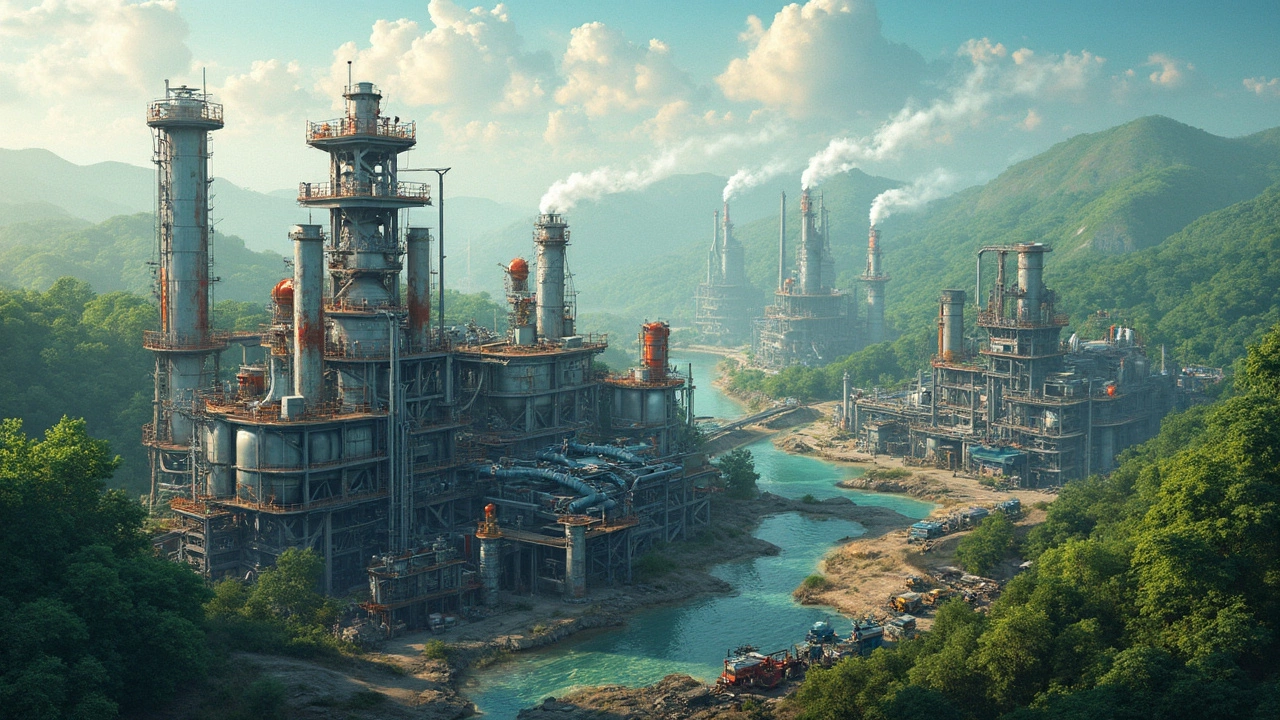- Does China Buy Steel from the US? Shocking Facts Steel Manufacturers Should Know May 21, 2025
- Chemicals Manufactured in India: A Deep Dive into the Industry Apr 14, 2025
- The Truth About Zero Waste Countries: Can Any Nation Claim Zero Landfills? Jul 3, 2025
- What Is the 15-Year Car Rule in India? Everything You Need to Know Oct 30, 2025
- What is the biggest plastic producer company in the world? Oct 28, 2025
Chemicals Manufactured in India: What’s Made, Where, and Who’s Behind It
If you’re wondering what chemicals come out of Indian factories, you’re not alone. From basic petri‑dish ingredients to high‑tech polymers, India’s chemical sector covers a huge range. In the last decade the industry has grown faster than many expect, thanks to cheaper power, skilled labor, and strong government push.
Let’s break it down so you can see the biggest products, the states that dominate, and the companies that set the pace. Whether you’re a buyer, a job‑seeker, or just curious, the facts below give you a quick, practical snapshot.
Top Chemicals Produced in India
India’s chemical output can be grouped into three buckets: basic chemicals, specialty chemicals, and agro‑chemicals. Basic chemicals like sulphuric acid, caustic soda, and methanol form the backbone. They’re used everywhere—from steel plants to textiles.
Specialty chemicals are where margins get juicy. Think of products such as fragrances, dyes, and polymer additives. Indian firms have begun exporting these to Europe and the US, carving out niches in flavors and cosmetics.
Agro‑chemicals, especially fertilizers and pesticides, are massive because of the country’s huge farming sector. Urea, ammonium nitrate, and phosphatic fertilizers dominate the domestic market, while niche bio‑pesticides are gaining ground.
In recent years, green chemicals have entered the conversation. Biopolymers like PLA and bio‑ethanol are being ramped up as the government pushes for low‑carbon solutions.
Leading Chemical Hubs and Companies
Geography matters. Gujarat leads the pack—its coastal location, robust port network, and pro‑industry policies make it the top chemical state. You’ll find giants like Reliance Industries, Gujarat State Fertilizers, and Indian Oil’s chemical divisions stationed there.
Maharashtra follows closely, with Mumbai and Pune hosting a mix of petro‑chemical complexes and specialty firms. Companies such as Hindustan Organic Chemicals and Aarti Industries call this state home.
Other notable hubs include Tamil Nadu for pharmaceuticals‑linked chemicals, and West Bengal for dye‑manufacturing. Each region brings its own raw‑material advantage—whether it’s access to coal, natural gas, or a skilled workforce.
On the company side, a few names dominate the revenue chart: Reliance Industries (petro‑chem), UPL (agro‑chem), Tata Chemicals (basic chemicals), and Aarti Industries (specialty). These firms invest heavily in R&D, often partnering with global labs to bring new molecules to market.
If you’re scouting suppliers, look for certifications like ISO 9001 and compliance with the Indian Chemical Act. Many Indian manufacturers also hold REACH and RoHS approvals, which smooths export to Europe.
Finally, keep an eye on the upcoming trends. Digital twins for plant optimization, AI‑driven process control, and circular economy initiatives are reshaping how chemicals are produced. Smaller start‑ups are leveraging these tech tools to compete with the big players, especially in specialty and green chemicals.
Bottom line: India makes a wide array of chemicals, with Gujarat as the clear leader, and a handful of large firms setting the tone. The sector’s growth is backed by low‑cost energy, a supportive policy framework, and a push toward sustainable products. Knowing the key chemicals, hubs, and players helps you make smarter sourcing, investing, or career decisions in this fast‑moving market.
Chemicals Manufactured in India: A Deep Dive into the Industry
- Aarav Sekhar
- Apr 14, 2025
India is a powerhouse in chemical manufacturing, producing everything from fertilizers to pharmaceuticals. This article delves into the various types of chemicals produced across the country, spotlighting key regions and their specialties. You'll explore India's massive output in industrial chemicals, its role in meeting global pharmaceutical demands, and the environmental challenges faced by the industry. Discover the factors that make India a critical player in the global chemical market with practical insights for those looking to engage with India's chemical sector.
